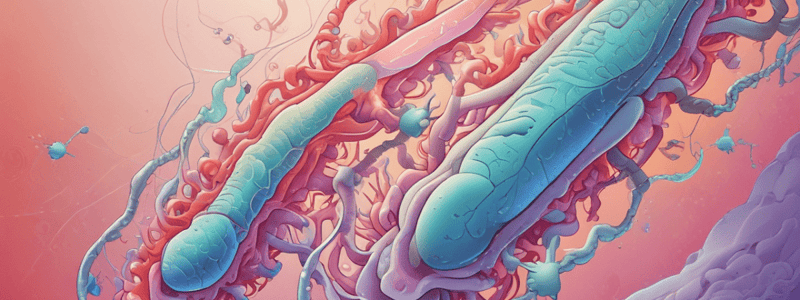Podcast
Questions and Answers
Vibrio cholerae had (H) and (F) antigens.
Vibrio cholerae had (H) and (F) antigens.
True (A)
Pseudomonads were adapted to live in all types of environments and ferment the sugars.
Pseudomonads were adapted to live in all types of environments and ferment the sugars.
False (B)
There are five types of Brucella.
There are five types of Brucella.
True (A)
Klebsiella had a mucoid colonies because of swarming.
Klebsiella had a mucoid colonies because of swarming.
Penicillins and cephalosporins were six-membered dihydrothiazin ring.
Penicillins and cephalosporins were six-membered dihydrothiazin ring.
Study Notes
Bacterial Characteristics
- Vibrio cholerae has H and F antigens.
- Bacteriods are Gram-negative bacteria, non-sporing, and catalase-positive, but they are non-motile.
- Pseudomonads are adapted to live in all types of environments, but they do not ferment sugars.
- There are five types of Brucella.
- Escherichia coli is a Gram-negative bacteria, motile, and non-sporing, and some strains can form capsules.
- Streptococcus Viridans are lance-shaped, non-capsulated, sensitive to optochin, and bile soluble.
- Escherichia coli grows on MacConkey agar, forming colonies with a red pinkish color, due to the breakdown of lactose.
- Klebsiella has mucoid colonies due to the production of polysaccharides, not swarming.
- Vibrio cholerae has two biotypes.
- Penicillins and cephalosporins have a six-membered β-lactam ring, not a dihydrothiazin ring.
Studying That Suits You
Use AI to generate personalized quizzes and flashcards to suit your learning preferences.
Description
Multiple choice questions about bacteria characteristics, including gram staining, motility, spores, and more.



